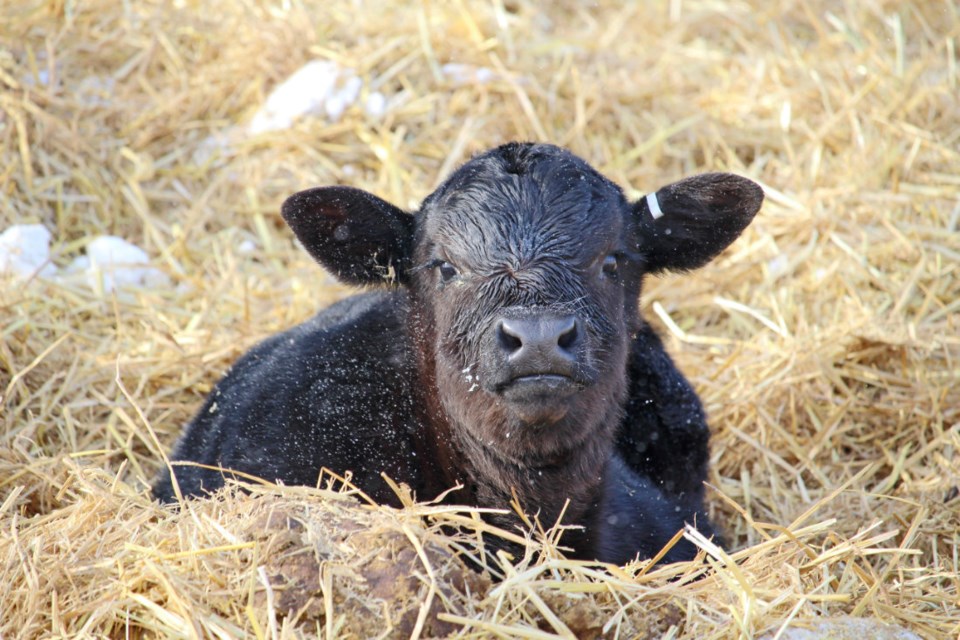Scours is the number one killer of calves under two months of age. It takes many different management strategies to prevent scours and scours is caused by many different things. These points will give some ideas to help prevent the buildup of organisms and also increase resistance in your calves. Organisms come from dirt, manure and other calves so we need to keep this in mind. Scours is the one disease where management changes and how you handle the first case will determine the number of cases you are faced with at the end of the calving cycle.
1 Cleaning calving area barns maternity pen early, let desiccate, and spray with disinfectant. Keep area squeaky clean. Do this as quickly as you can after last calving season. Try not to run cattle in the area until just before calving season
2. Have cows in good body condition score at calving (2.5-3.5) and on proper mineral supplementation. Feed tested. The in shape cows lead to good quality colostrum and also overweight cows can increase calving problems. Internal fat in the pelvis leads to tighter deliveries.
3. If calving in winter try and mother up cow and calf for 24 hours in a separate pen and insure suckling happens as early as possible after birth. If very cold weather (lows -15 C or colder) many days in a row is where need creep areas for the calves as soon as out of the barn. Most producers if they have creep areas in every pen find calves less stressed warm and decreased scours and pneumonia incidences are the result.
4. Twins, hard pulls, calves slow to rise, calves on cows in poor condition and those with a poor suckle reflex after twenty minutes or on cows with poor udders or poor teat conformation administer colostrum (natural or substitute) immediately. Saskatoon Colostrum Company (head start) makes some of the best-powdered colostrum there is. A few others come close but be cautious you get what you pay for, as there are many low priced substitutes on the market. If in doubt in any way about whether a calf sucked or is low on vigour give the colostrum.
5. Scours vaccinate cows and heifers following the time of administration closely. It takes colostrum upwards of five weeks to form. Insure heifers and any new additions in the last year are vaccinated and given the booster vaccine. There are three scours vaccines on the market all with pretty similar efficacy. Work with your veterinarian to fit the best match to your operation depending on your time before calving. If vaccinating at a different length of time before calving may warrant changing vaccines even. Ease of administration may come into play as two are given intramuscular and one subcutaneously but again make the best choice depending on your veterinarians recommendation. This is why most veterinary clinics will carry at least two of the scours vaccines because timing is very critical.
6a. Not recommended to purchase bred cows before the calving season or if you do try and isolate them somewhat. They aren’t exposed to what’s on your place and vise-versa your cows are not exposed to what they bring in. The most critical time for biosecurity is spring calving time .
6b. Never ever bring in a calf from another herd especially a Holstein. These may introduce scour agents and one is cryptosporidiosis, which is not in any of the scour vaccines.
6c. Biosecurity don’t allow visitors especially at calving season. Have supply of clean boots or booties and use boot dips when moving around and between pens.
7. Ideally calve heifers ahead of cows and in a separate area.
8. Is there a coccidiosis prevention program meaning rumensin (monensin) in the ration and often producers when starting to creep feed may put in a product called deccox for coccidiosis prevention.
9. Use a separate esophageal feeder for newborns, scours or sick with other conditions keep it labeled and disinfect the tubes in-between usages.
11. Once 30-50- 70 pairs in a pen (field) depending on size of pen and size of herd. Don’t mix pens as calving season progresses. Eliminate any standing water.
12. If get any scours cases have your veterinarian check for cryptosporidiosis to rule it out. The best/first treatment should be electrolytes orally. Your veterinarian will advise their treatment schedule and whether any need IV fluids.
13. The scouring calf and mother if don’t respond after one treatment the rule of thumb is isolate them away from the others in the herd.
14. Put in a boot dip and use separate coveralls for treating calves versus working with newborns. Have an isolation area away from the calving barn for sick pairs.
15. Use a calving suit for calving that can be washed up and wash the chains and calf puller before putting them away.
15. After treating calves make sure clean up and clean coveralls and disinfected boots for the healthy calves. Isolate sick calves with mothers.
16. If weather good minimize movement through the barn and isolate more fractious cows with their calves in a quiet area.
Hopefully from these twenty or so points you can find one or two to improve on for this calving season and I hope it is an uneventful one with very little sickness and disease. These ideas may be clearer if you are in the middle of calving season and there may be some areas you can improve on.

